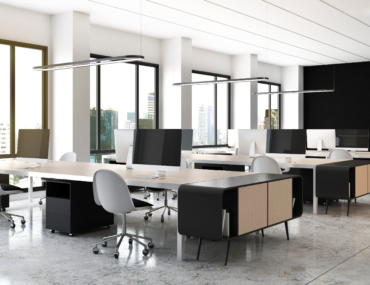For many homebuyers and tenants today, space feels like the one luxury that keeps shrinking. The square meters stay the same, but the furniture grows larger, the walls close in, and the feeling of comfort fades. Whether it’s a compact city apartment or a smaller holiday home, the question is no longer how much space you have, but how intelligently you use it.
As living costs rise and layouts become tighter, residents are learning that design can do what square meters can’t: make a home feel expansive, calm, and functional.
Below, we unpack the art and science of making compact homes feel open, balanced, and effortlessly livable through design principles proven by experience.
Declutter Before You Decorate
Reclaiming space is the quickest way to acquire it. The most frequent cause of small homes feeling claustrophobic is visual clutter. Before organising, many residents decorate, adding things that take up space rather than making it.
Expert designers frequently suggest starting with subtraction: get rid of everything that isn’t absolutely necessary, then rebuild the area piece by piece. The floor and the mind are cleared when only useful, meaningful items are kept.
Clear surfaces and visible floor edges make a home feel bigger and more airy. Clear space provides the brain with reference points for distance and depth and permits light to flow.
Here, storage is the unseen hero. Storage is extended upward rather than outward with floating shelves, under-bed compartments, and modular cabinets.
Let There Be (Layered) Light
Boundaries are defined by light. Layered lighting expands, while poorly lit spaces constrict. A single ceiling lamp creates harsh shadows and flattens perception. Experts employ a three-tier lighting approach: accent for depth, task for focus areas, and ambient for general illumination.
For instance, a narrow living room can appear wider by combining wall sconces, table lamps, and soft ceiling panels. Simple LED strips placed behind mirrors or beneath shelves can produce a floating effect that deceives the eye into perceiving additional dimensions. Additionally, natural light not only sells but also heals. It maintains interiors emotionally balanced, light, and airy.
Color as a Spatial Tool
Perception is altered by colour more quickly than by architecture. Light grey, sand, and off-white are examples of pale neutrals that reflect light and cause surfaces to expand outward. Intimacy is enhanced by deeper tones, but they must be restrained. With a soft background and a single focal wall or piece of furniture, the most clever small-space colour schemes employ contrast sparingly.
This is frequently referred to as “directional colour” by designers. You can create the appearance of distance by directing the viewer’s attention to a single wall or vertical element. A room can be anchored without being enclosed by a thin strip of darker paint near the floor.
Refreshing colour schemes in smaller homes can increase perceived space by up to 15% and resale appeal by about 10%, making repainting one of the most economical improvements in practice.
Furniture That Works as Hard as You Do
The average small apartment loses value with poorly placed furniture. The solution isn’t fewer pieces, it’s smarter ones.
Multi-purpose furniture defines modern urban living. Think of a sofa that becomes a guest bed, a coffee table with hidden storage, or a fold-down desk that doubles as a dining counter. A single well-chosen item can replace three conventional ones while adding mobility.
Scandinavian and Japanese minimalism are leading influences here. The Scandi approach focuses on light wood tones, open legs, and neutral colors that reflect light and air. The Japanese “ma” philosophy values balance, the harmony between what is placed and what is left empty. Together, they teach one lesson: space isn’t just what you fill, it’s what you leave untouched.
Residents applying these principles report tangible comfort improvements. In post-occupancy interviews conducted by Cairo-based interior consultancies, 7 out of 10 respondents said multi-functional layouts made their homes “feel calmer and easier to maintain.”
The Illusion of Height and Continuity
When floor area is fixed, height becomes the new dimension to work with. Designers recommend extending curtains from ceiling to floor to elongate walls, using vertical shelving, and emphasizing upward lines.
Similarly, continuous flooring removes visual breaks. A single surface, like matte porcelain or engineered wood, allows rooms to blend into one another, adding flow and spaciousness.
Studies in interior perception show that this approach can make a unit feel larger, even when no actual expansion occurs. Continuity equals calm.
Bring the Outside In
The smallest apartments can feel bigger when they connect with something beyond their walls. Natural elements, sunlight, plants and organic textures extend perspective. Even a small indoor garden or balcony herb shelf changes how space feels.
Adding greenery has measurable benefits too. Homes with visible indoor plants drop stress levels among residents. In crowded cities, this psychological spaciousness matters as much as physical space.
The Emotional Architecture of Calm
A well-designed home isn’t just about walls and furniture; it’s about what it makes you feel when you walk in. Cramped rooms often translate to mental noise. Clear lines, breathable layouts, and intentional simplicity reduce that noise.
The most successful minimalist interiors don’t feel empty but they feel considered. Every piece has purpose. Every corner breathes. And that restraint creates luxury not by addition, but by subtraction.
This emotional balance is particularly important today, with more people working from home or spending longer hours indoors. A clutter-free, well-lit, and gently toned space promotes focus, rest, and emotional balance, three things modern life often forgets to offer.
Investing in Better Living
You don’t need to rebuild to transform, small-space optimization focuses mostly on lighting, storage, and layout changes, yet yields one of the highest returns in resale desirability.
For tenants, the same logic applies. Modest design upgrades, from replacing heavy curtains with sheer fabrics to repainting in lighter shades, can elevate the daily experience without structural change.
Living Large in Limited Space
Control over clutter, color, light, and balance. Control over what enters your home and what stays out of it.
As cities grow denser and lifestyles more compact, the skill of maximizing small spaces becomes a new measure of modern intelligence & how well we adapt, simplify, and design for what truly matters.
Because when a home is designed with intention, even forty square meters can feel infinite.



